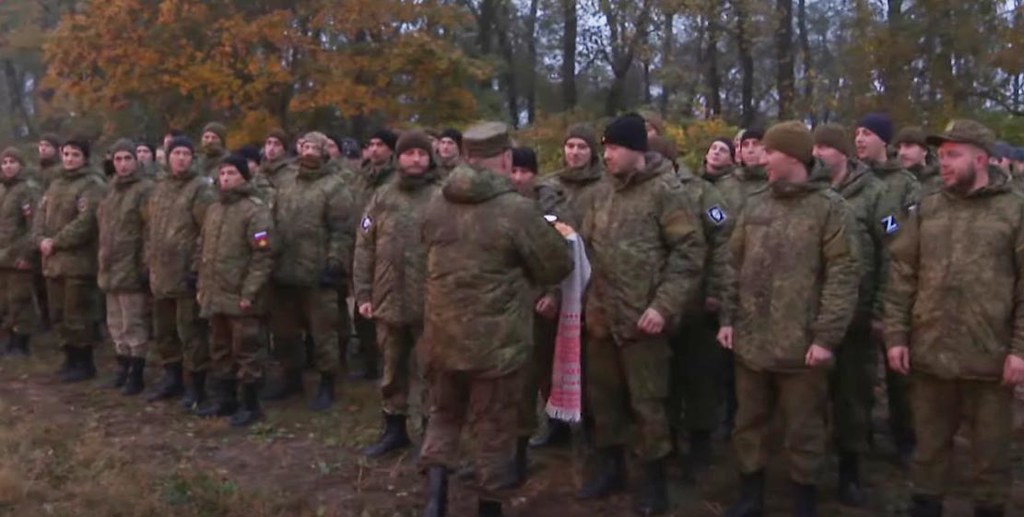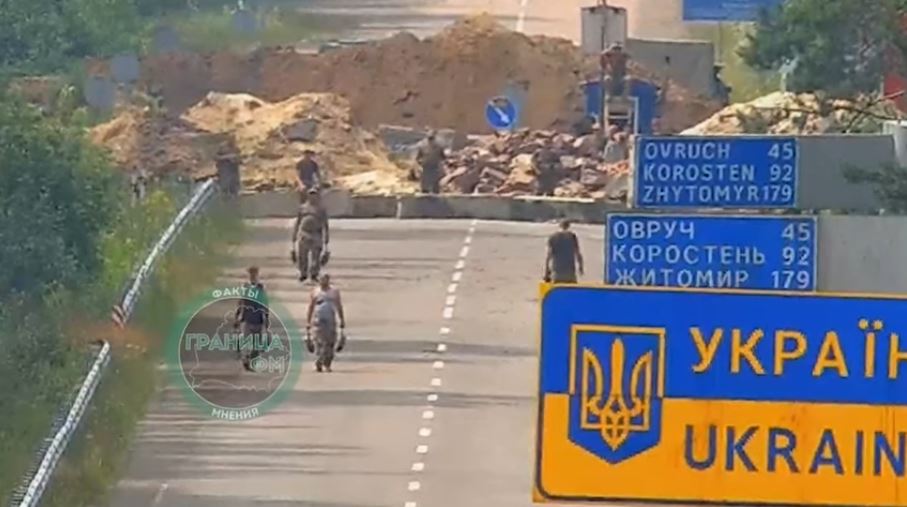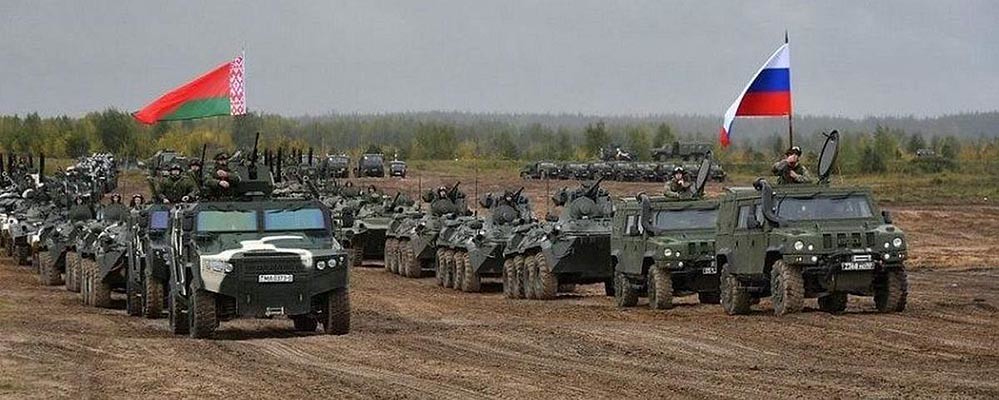The possible attack of Russia and Belarus on Ukraine from the north: what is true?
En los últimos días se han publicado una serie de noticias que parecen indicar la preparación de un posible ataque conjunto de Bielorrusia y Rusia contra Ucrania.
Belarus is dragged by Russia to enter the war
Russia has long been pressuring its Belarusian partner to join forces in Russia's aggression against Ukraine, but dictator Alexander Lukashenko has been reluctant, as such a step could further weaken his regime, as quite diminished by the protests caused by the most recent of the electoral frauds with which the current ruler has ensured his permanence in power since 1994. After much Russian pressure, on October 4 Lukashenko agreed to participate in a Russian offensive against Ukraine. A week later, on October 11, the Belarusian dictator accused Ukraine, Poland and Lithuania of preparing "terrorist attacks" against Belarus, a crude lie to try to justify their support for Putin in aggression against Ukraine.
Last week, Lukashenko accused Ukraine of having plans to attack Belarus and said the Ukrainians had blown up border bridges and laid mines on roads between the two countries. The accusation was purely ridiculous: it would be the first offensive in history in which the alleged attacker destroys the bridges that would serve to carry out his attack. Obviously, such a maneuver can only be explained as a Ukrainian attempt to stop a new attack from Belarus, such as the one launched by the Russian forces stationed in that country on February 24 against Kiev.

The observations of a Belarusian journalist about the possible attack from the north
The Belarusian opposition journalist Tadeusz Giczan spoke about this possible attack this afternoon. In a thread posted on his Twitter account, the journalist has pointed out that "the threat of a new attack on Kyiv from the north is a bluff." Giczan reviews the arguments that justify this conclusion: "Last week Lukashenko announced the deployment of a joint Belarusian-Russian regional grouping of troops composed of Belarusian ground forces and several thousand Russian troops (Belarusian MoD later specified there would be 9,000 of them)."
Giczan adds: "The first trains with Russian troops have already started arriving in Belarus, and three important points should be made here. Judging by the photographs, it is not regular Russian army units that arrive in Belarus, but freshly mobilised Russian reservists. Russian military trains don't carry any heavy equipment - only trucks, petrol tankers and passenger cars with soldiers. Russians are not being brought to the border with Ukraine like in January, but to training bases in northern Belarus."

Russian troops sent to Belarus are reservists
The Belarusian journalist points out that "we are almost certainly talking about the training of Russian reservists in Belarus, as all Russian ranges are overloaded. The Ukrainian military intelligence announced this back in late September (they estimated the nr of reservists to be 20k). According to the AFU [Ukrainian Armed Forces] joint forces command, as of early October, there were up to 1,000 Russian troops, 6 aircraft, 4 Iskanders and 12 S-400s in Belarus. In theory, the mobilised troops could reinforce this grouping after training, but there are several "buts"."
Regarding the videos that have been circulating on Twitter in recent days showing Russian tanks, armored vehicles and howitzers with "menacing new tactical markings" that would be arriving in Belarus, Giczan points out that they "aren't real. Or rather, the videos are real, but they show trains of the Belarusian army. This can be easily determined by the blue passenger cars (Russia's are grey) and the triangle-shaped tactical markings adopted by the Belarusian army in late Summer. Also, these Belarusian troops aren't being deployed on the border with Ukraine, it's just a rotation. Those brigades that have been reinforcing the border in recent months are returning to their bases, being replaced by fresh ones. The total number of troops remains the same."

Russia has delivered to Russia 92 T-72A tanks and dozens of trucks
The journalist adds: "The Belarusian MoD said today that Russia plans to transfer 170 tanks to Belarus, but so far we see the opposite process. Without any statement last week alone, Belarus handed over at least 92 T-72A tanks and dozens of trucks to Russia. So if anything the Belarusian flank is being weakened rather than strengthened, and all Belarus can do is put on a good face and loudly announce that Ukraine should be scared. In recent days Lukashenko and his minions made a whole bunch of loud statements about the deployment of a regional grouping of troops, pre-emptive strikes, partial mobilisation, issuing of weapons to firefighters, etc. Some of these statements aren't even new, they were just repeated this week for greater effect. The main target audience of these statements is the West. For the first time in living memory, the Belarusian MoD has decided to communicate its actions also in English and Spanish. A stark contrast to February, when the attack was real and the Belarusian MoD was silent."
Giczan notes: "The only real things we have so far are the arrival of Russian mobiks [mobilized troops], the handover of >100 tanks and trucks to Russia and isolated "mobilisation readiness exercises" in some areas of Belarus, which look as pathetic as in Russia. Everything else is just hawkish rhetoric."

The problems that a northern offensive would encounter at this time
Taking into account the situation on the northern border, would a new attack in that area be feasible? The Belarusian journalist states: "The Belarusian-Ukrainian border is almost entirely covered by the impassable Polesie marshes, the largest wetlands in Europe. The few sections along the roads where the Russians attacked in February have been turned by Ukrainians into the Maginot Line. With minefields, echeloned defence, blown-up bridges, etc. An attack on them by the Belarusian-Russian grouping in its current state would be suicide which would likely result in Lukashenko's political suicide. So no, there will be no attack from Belarus, at least for now."
Putin and Lukashenko try to distract Ukrainian forces and put pressure on the West
In view of the observations made by Tadeusz Giczan, everything seems to indicate that Putin and Lukashenko are trying to divert Ukrainian troops from other fronts to reinforce the north, in order to weaken the successful Ukrainian counteroffensive in the Kherson region and in the east of the country. The threat of attack would also be a way of putting pressure on the West, hinting at a possible escalation of the war that would leave Ukraine more weakened. However, the heavy Russian losses and its poor "partial mobilization" do not suggest that Russia is in a position to open a new front in the north.
Not even the support of the Belarusian army would give him a guarantee of success. The armed forces of Belarus consist of about 60,000 men. The Belarusian ground forces have about 16,000 soldiers. That force would have to fight its way across a border whose lines of communication are cut off, and in any case, such an offensive would only encourage the West to send even more military aid to Ukraine. The reality is with this war, planned overestimating its own possibilities and fatally underestimating the Ukrainian forces, Putin and Lukashenko have gotten themselves into a quagmire from which they don't know how to get out. Trying to intimidate Ukraine and the West with threats is only a resource that shows their desperation and their failure.
---
Main photo: Ministry of Defense of Belarus. Russian and Belarusian military vehicles in a joint exercise.
|
Don't miss the news and content that interest you. Receive the free daily newsletter in your email: |
- Most read
- The 'hole' without civil flights around Paris during the opening of the Olympic Games
- Stunning footage of the F-15QA Ababil in flight recorded from its cockpit
- The firearms used by the Pontifical Swiss Guard, the smallest army in the world
- Eurofighter vs F-35: the opinions of professional pilots on these advanced fighters
- The first photo of an F-16 fighter with Ukrainian insignia and the details it has revealed
- The most distant deployment of the Spanish Air Force in Australia and New Zealand
- This is the driver station of an M1 Abrams tank and the impressive start of its engine

 ES
ES







Opina sobre esta entrada: